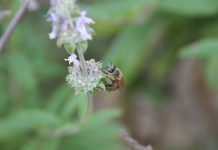
Scientists have discovered new traces of some of the earliest life forms on Earth in Saudi Arabia.
These ancient structures, known as stromatolites, are made by algae that grow towards light and produce carbonates.
Stromatolites first appeared 3.48 billion years ago and were the main form of life on Earth for nearly three billion years.
Stromatolites played a crucial role in the Great Oxygenation Event, which introduced oxygen into Earth’s atmosphere and changed it dramatically.
This new oxygen initially wiped out other competing life forms, allowing stromatolites to thrive.
However, as more life forms adapted to the oxygen-rich atmosphere, stromatolites started to decline. They are now mostly found in the geological record after mass extinctions or in extreme environments.
“Bacteria that create stromatolites are always present, but they usually don’t get the chance to form these structures because they are outcompeted by corals,” explains Volker Vahrenkamp, the author of a new study published in the journal Geology.
Today, stromatolites are typically found in harsh environments like the hypersaline waters of Shark Bay in Australia and alkaline lakes.
Until recently, the only known modern example of stromatolites in a diverse, shallow marine setting was in the Exuma Islands in the Bahamas.
This changed when Vahrenkamp discovered living stromatolites on Sheybarah Island in the northeastern Red Sea.
He was studying salt crust domes when he came across the stromatolite field. Having seen stromatolites in the Bahamas, Vahrenkamp recognized them immediately.
“It is a desirable area to look for stromatolites because of its extensive carbonate platform coastline,” Vahrenkamp said. “But like in the Bahamas, they are found in only a small area.”
Sheybarah Island has conditions similar to the Bahamas, including alternating wet and dry periods, extreme temperature changes, and nutrient-poor waters.
Because these conditions are common across the Al Wajh carbonate platform, there might be other stromatolite fields nearby. Vahrenkamp and his team have started exploring the area, but stromatolites are small, about 15 cm across, making them hard to spot until up close.
The Sheybarah Island field contains several hundred stromatolites. Some are well-developed and textbook examples, while others are more sheet-like and low in relief.
“Perhaps they are juvenile,” Vahrenkamp speculates, “but we don’t know what a baby stromatolite looks like. They must start small, but we don’t know.”
Dating stromatolites is challenging because they contain two different carbonate components that are difficult to separate. Vahrenkamp’s team is monitoring the field monthly for any visual changes and may attempt to grow some in an aquarium.
This discovery provides an opportunity to better understand the formation and growth of stromatolites.
It offers insights into early life and ocean evolution on Earth and may even help in the search for life on other planets, such as Mars. Stromatolites, as some of the first life forms on Earth, could provide clues about what life might look like on Mars and how to recognize it.
Source: Geological Society of America.



